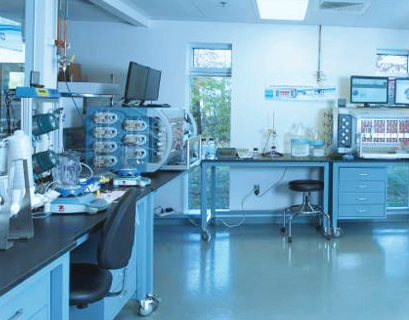
A Look at the Current State of Continuous Bioprocessing
Introduction
Recently, BioProcess International in conjunction with Pall Life Sciences published an informative supplement titled, “Is Continuous Bioprocessing the Future? ”. The publication contains 12 articles covering various aspects of continuous bioprocessing as well as additional articles on enabling technologies. I found the supplement to be a useful update on continuous bioprocessing technology benefits, implementation challenges and successes, as well as what the future holds. Following is a sampling of articles with key highlights.
Continuous Processing Background
The supplement starts at the beginning as industry expert Dr Cynthia Challener reviews “The History of Continuous Processing”, including the rationale behind continuous processing and its long history in other non-pharma business sectors. She points out that the drivers for other industries to make the switch to continuous came because of advances in process control and automation, and details the benefits continuous processing must offer, such as increased flexibility to meet variable demand; improved product consistency; higher output in a smaller footprint; reduced work in progress; and decreased finished goods inventories.
Dr Challener explains that a deep understanding of the manufacturing process is essential, together with process control and monitoring systems that are comprehensive and reliable. Additionally, she explores the challenges of implementing continuous bioprocesses, and details the regulatory implications for drug manufacturers.
Moving Toward Continuous Biomanufacturing
In the article, “Moving One Unit Operation at a Time Toward Continuous Biomanufacturing”, Dr Peter Levison discusses how a transition from fed batch to continuous biomanufacturing can be achieved. He begins by explaining fed batch processes and some of the benefits of an integrated continuous approach in biomanufacturing—including the connection of each unit operation to minimize intermediate hold steps—and goes on to describe Pall’s work in developing enabling technologies to ease transition in each process step.
For upstream, perfusion cell culture, Dr Levison overviews this continuous alternative and comments on an expected rise in this application over the next 1-3 years. He also details new approaches to traditional downstream processes that can be semi- or fully integrated based on user needs, noting that while some of these technologies are already available, others are still in development and challenges still exist.
And in the article, “Preparing for Continuous Bioprocessing”, Pall’s Chief Technology Officer, Dr Martin Smith, elaborates on the points made by Dr Levison, and predicts that a blend of traditional unit operations coupled with clusters of continuous processes will be where the industry starts off. Still, just as Dr Challener mentioned in her article, developing the automation and control technologies is critical. Process control must be demonstrated throughout the entire process or within each cluster. As such, he concludes that Pall is exploring methods for incorporating real-time monitoring and scalable solutions to increase the attractiveness of continuous bioprocessing application.
Ensuring Quality in Continuous Bioprocessing
As the supplement delves deeper into the implications of continuous bioprocessing, Dr Mike Quesenberry and Dr James Hathcock consider “Regulating Quality in Continuous Processing”, addressing some of the regulatory concerns companies may have when considering a move to continuous bioprocessing. In addition to reviewing benefits of transitioning, and how this aligns with FDA’s Quality by Design (QbD) and process analytical technology (PAT) initiatives, they review the definition of a batch and how this affects the process.
The authors also discuss the need for greater process understanding with a call to consider QbD, critical quality attributes and critical process parameters. The authors expand on this point by discussing implementation of PAT. And as they round the article out, they detail how process validation is another area that both FDA and EMA have published guidance on with respect to continuous processes.
Enabling Technologies and a Look Ahead
Critical Components for Integrated Solutions
The nice thing about this supplement is the variable perspectives provided. In fact, two other high level executives provide insight into critical components of implementing semi- and fully-continuous bioprocesses, as well as how single-use technologies act as an enabler of this transition. And in other articles the team reviews the results and successes with interconnected technologies.
Technical Reviews
There are also some noteworthy technical articles from Pall Life Sciences. I encourage you to check them out if you are interested in continuous processing:
- Clarification using Acoustic Wave Separation offers Advantages including -Continuous Process Solution
- Cadence Single Pass TFF Provides in-line Concentration, Enables Continuous Process